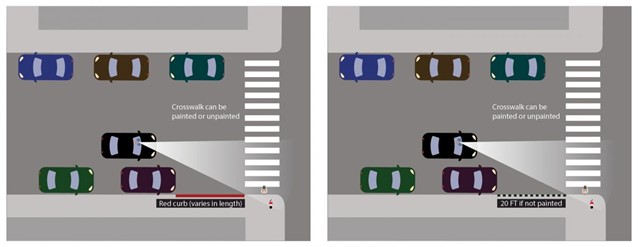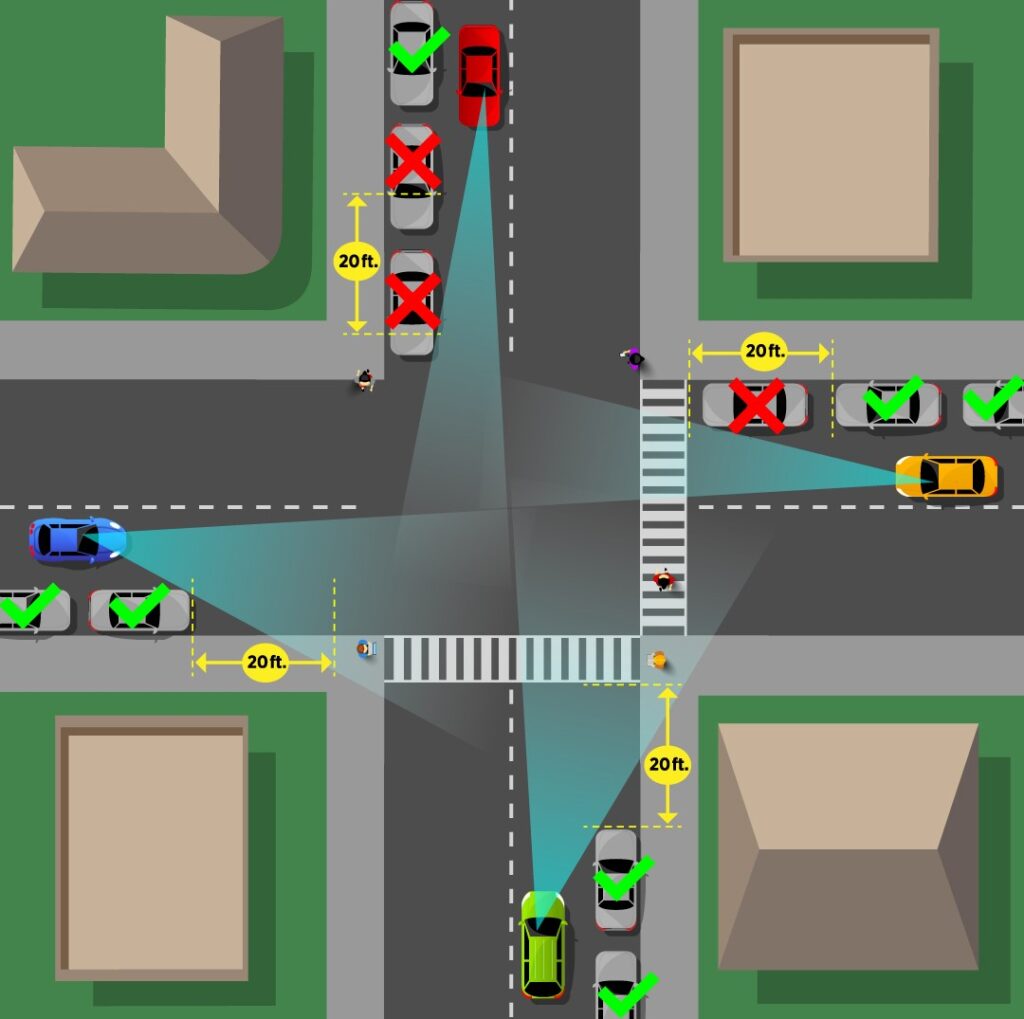AB 413 – California Daylighting Law
Public Works
- August 16, 2024

What is it?
Daylighting is the simple concept that safety is improved by removing parked cars next to crosswalks. By keeping the area next to crosswalks clear of parked vehicle obstructions people walking and people driving or riding on the street can see each other better. Beginning January 1, 2024, remember to leave at least 20 feet (or one large car length) between a marked or unmarked crosswalk and your vehicle, so approaching vehicles can see pedestrians and bicycles.
How does it work?

The diagram shows how the clearance of 20 feet can make a big difference for street safety at painted and unpainted crosswalks.
Daylighting increases the field of view of both pedestrians crossing the street, and drivers pulling up to an intersection. The diagram above shows how much easier the extra space makes it to see the curbs and the entire crosswalk. This is especially important for children, who are less visible at intersections. Drivers get a clearer view of the intersection and can easily see if someone is waiting to cross from well in advance. For more information on how visibility is essential to the safety of intersections, check out the research from the experts at the National Association of City Transportation Officials.
California’s New Daylighting Law (AB 413)
Starting on January 1, 2024, it will be illegal in California to park within 20 feet of the approach of any marked or unmarked crosswalk, even if the approach does not have any red curbs painted. California Assembly Bill 413 was signed into law in October 2023 and replicates the law in other states that similarly require people not to park right next to any crosswalk. Specifically, the law:
- Creates a new section of the Vehicle Code, CVC 22500(n), which prohibits the stopping, standing, or parking of a vehicle within 20 feet of the vehicle approach side of any unmarked or marked crosswalk or 15 feet of any crosswalk with a curb extension anywhere in California.
- On a two-way street, only the space on the right-side approaching a crosswalk as one is driving is affected. However, on a one-way street, both the left and the right curb areas 20 feet from the crosswalk are no parking zones.
- Allows local jurisdictions to paint zones that are longer or shorter than 20 feet. When you see a red curb or parking prohibition sign next to a crosswalk just follow that distance. If there is no paint or signs, the 20 feet distance applies. 20 feet is about the length of a standard parking space or one large car-length.
